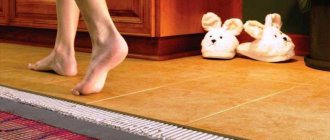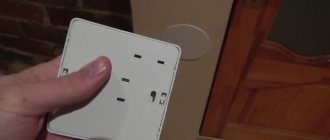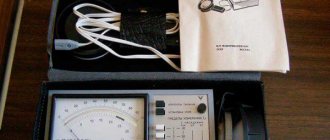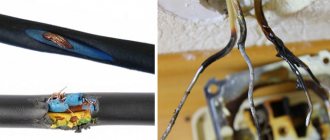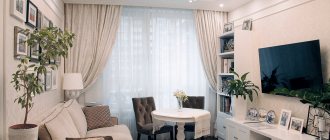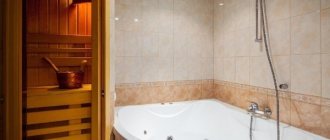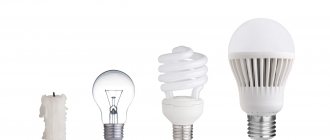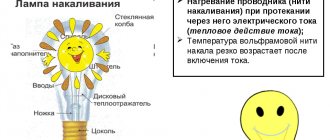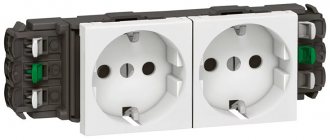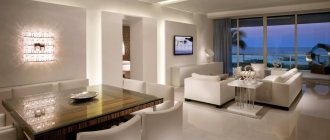If the hardware is familiar: light absorption and reflection coefficients, color rendering index, why ceiling height is important, etc., then go straight to point 5. There we have collected quick ways to calculate illumination. If you do come across unfamiliar words, then spend 30 minutes getting to know the topic now so as not to spend over your budget on repairs later.
Why is it important? Not to mention the fact that dim light spoils vision, and too bright light makes you nervous, lighting is also an inspiration for space. Imagine you spend two weeks choosing a sofa of a certain alabaster shade. You wait another two weeks for delivery, because, of course, there is no such sofa in stock. Finally a sofa at home. You are putting the finishing touches: screwing a light bulb into the floor lamp near the sofa and turning it on. And then your alabaster sofa turns into a stain the color of a dirty puddle.
Remember, an expensive renovation with ill-conceived lighting will look worse than an inexpensive one with beneficial light.
Residential illumination standard: W per m2
When only incandescent lamps were used, power was calculated in watts. But with the spread of fluorescent and LED lamps, this option has become not very convenient. The ratio of power to luminous flux differs between models, so it is easier to use the indicators in lumens and convert them to W, based on the type of light bulb indicated in the table.
| Luminous flux, Lm | Incandescent lamp (power in watts) | Luminescent (power in W) | LED (power in W) |
| 250 | 20 | 5-7 | 2-3 |
| 400 | 40 | 10-13 | 4-5 |
| 700 | 60 | 15-16 | 8-10 |
| 900 | 75 | 18-20 | 10-12 |
| 1200 | 100 | 25-30 | 12-15 |
| 1800 | 150 | 40-50 | 18-20 |
| 2500 | 200 | 60-80 | 25-30 |
These are standard figures, actual figures may vary. Therefore, when choosing or purchasing light bulbs, you need to check the data and, if necessary, adjust their quantity or power to obtain the desired level of illumination. It is especially important to do this when purchasing LED equipment, since the indicators there depend on the manufacturer and the diodes used in the lamp.
The option of calculating illumination in lux is much more convenient.
SNiP lighting standards
Articles
Surely you know that insufficient lighting in some cases causes headaches, eyes, etc., and vice versa, its excess also has a detrimental effect on vision. For such purposes, there are SNiP lighting standards for each type of premises and streets. You need to know them and be able to apply them. For example, different types of premises have their own norm, and it also depends on the characteristics of the work process, its duration and frequency.
Illumination standards in Russia are regulated by the set of rules SP 52.13330.2016 and they are indicated in the table in lux for the working surface : if it is a room, library or educational institution - in this case the working surface is the height of the table , usually 0.8 meters from the floor (G =0.8) ; if it is a staircase, hall, gym or road - then in this case the working surface is: floor, road or ground (G = 0.0) .
Therefore, today, according to SNiP, each room has its own illumination standard, and for convenience, below we have presented you with all the tables in lux in alphabetical order:
- Emergency lighting of escape routes
- Emergency and security lighting
- Pharmacy lighting standards
- Lighting standards for banking and insurance institutions
- Station lighting standards
- Hotel lighting standards
- Lighting standards for preschool institutions
- Residential lighting standards
- Lighting standards for logistics centers
- Store lighting standards
- Lighting standards for premises of administrative buildings (ministries, departments, committees, municipalities, departments, design and engineering organizations, research institutions, etc.)
- Lighting standards for public service enterprises
- Lighting standards for catering establishments
- Lighting standards for sanatoriums, holiday homes, boarding houses
- Standards for lighting areas of parks, stadiums and exhibitions
- Lighting standards for leisure facilities
- Lighting standards for institutions of general education, primary, secondary and higher special education
- Lighting standards for sports and recreational institutions
- Lighting standards for industrial facilities according to VSN 196-83 Industry standards for the design of artificial lighting of the main workshops of industrial enterprises of the Ministry of Transport First put into effect on January 1, 1984
- Lighting standards for sports facilities
- Lighting of gas stations (gas stations) and parking lots
- Lighting of building entrances
- Lighting of pedestrian spaces
- Lighting of underground and overground pedestrian crossings
- Lighting of streets, roads and squares
Emergency lighting of escape routes
| № | Illuminated objects | Average illumination Ecp, lux not less | Illumination distribution Emin / Eсr not less |
| 1 | Evacuation routes for high-risk areas | 15 | 0,10 |
| 2 | Escape routes up to 2 m wide | 1 | 0,025 |
| 3 | Evacuation lighting for large areas | 0,5 | 0,025 |
Emergency and security lighting
| № | Illuminated objects | Average illumination Ecp, lux not less |
| 1 | Security lighting (in the absence of special technical means) | 0,5 |
Pharmacy lighting standards
| № | Illuminated objects | Average illumination Ecp, lux not less |
| 1 | Assistant, aseptic, analytical, packaging, preparation of concentrates and semi-finished products, control and marking. (G-0.8). | 500 |
| 2 | Prescription department, manual sales departments, optics, finished medicines. (G-0.8). | 300 |
| 3 | Storage areas for medicines, dressings and utensils. (G-0.8). | 150 |
| 4 | Storage room for acids, disinfectants, flammable and flammable liquids. (G-0.8). | 75 |
| 5 | Pantry containers. (G-0.8). | 50 |
Lighting standards for banking and insurance institutions
| № | Illuminated objects | Average illumination Ecp, lux not less |
| 1 | Operations room, credit group, cash room. (on tables, G-0.8). | 400 |
| 2 | Server room, premises for interbank electronic payments. (on tables, G-0.8). | 400 |
| 3 | Room for production and processing of identification cards. (on tables, G-0.8). | 400 |
| 4 | Premises of the collection department, collector. (on tables, G-0.8). | 300 |
| 5 | Premises for serving individuals. (on tables, G-0.8). | 300 |
| 6 | Depository, pre-storeroom, storage room for valuables. (on tables, G-0.8). | 200 |
| 7 | Safe. (on tables, G-0.8). | 150 |
Station lighting standards
| № | Illuminated objects | Average illumination Ecp, lux not less |
| 1 | Computer center. (G-0.8). | 400 |
| 2 | Prescription department, manual sales departments, optics, finished medicines. (G-0.8). | 300 |
| 3 | Waiting rooms, operating rooms, ticket offices, ticket baggage counters, communications department, operator's room, control room. (G-0.8). | 300 |
| 4 | Rooms for mothers and children, long-stay passengers. (on the floor, G-0.0). | 200 |
| 5 | Distribution halls, lobbies. (on the floor, G-0.0). | 150 |
Hotel lighting standards
| № | Illuminated objects | Average illumination Ecp, lux not less |
| 1 | Service bureau, premises for duty and service personnel. (G-0.8). | 200 |
| 2 | Living rooms, rooms. (on the floor, G-0.0). | 150 |
Lighting standards for preschool institutions
| № | Illuminated objects | Average illumination Ecp, lux not less |
| 1 | Music and gymnastics rooms, dining rooms. (on the floor, G-0.0). | 400 |
| 2 | Group, playing. (on the floor, G-0.0). | 400 |
| 3 | Changing rooms. (on the floor, G-0.0). | 300 |
| 4 | Medical office. (G-0.8). | 300 |
| 5 | Isolators, rooms for sick children. (on the floor, G-0.0). | 200 |
| 6 | Adopted. (on the floor, G-0.0). | 200 |
| 7 | Sleeping. (on the floor, G-0.0). | 100 |
Residential lighting standards
| № | Illuminated objects | Average illumination Ecp, lux not less |
| 1 | Children's. (on the floor, G-0.0). | 200 |
| 2 | Living rooms, kitchens. (on the floor, G-0.0) | 150 |
| 3 | Common premises: concierge premises. (on the floor, G-0.0). | 150 |
| 4 | Corridors, bathrooms, restrooms. (on the floor, G-0.0). | 50 |
| 5 | Common premises: lobbies. (on the floor, G-0.0). | 30 |
| 6 | Common building premises: floor corridors and elevator halls, stairs and landings. (on the floor, G-0.0). | 20 |
Lighting standards for logistics centers
| № | Illuminated objects | Average illumination Ecp, lux not less |
| 1 | For closed warehouses with floor storage with gas discharge lamps | 75 |
| 2 | For closed warehouses with floor storage with incandescent lamps | 50 |
| 3 | For rack storage with HID lamps | 200 |
| 4 | For rack storage with incandescent lamps | 100 |
| 5 | For open warehouses | 20 |
| 6 | Expedition of cargo reception and delivery | 150 |
| 7 | Sorting and picking of cargo | 200 |
Store lighting standards
| № | Illuminated objects | Average illumination Ecp, lux not less |
| 1 | Self-service grocery stores. (G-0.8). | 400 |
| 2 | Trading areas of stores: bookstores, ready-made clothes, linen, shoes, fabrics, fur products, hats, perfume, haberdashery, jewelry, electrical, radio goods, food without self-service. (G-0.8). | 300 |
| 3 | Fitting booths. (B-1.5). | 300 |
| 4 | Main cash register premises. (G-0.8). | 300 |
| 5 | Premises of order departments, service bureau. (G-0.8). | 200 |
| 6 | Trading areas of stores: tableware, furniture, sporting goods, building materials, electrical appliances, toys and office supplies. (G-0.8). | 200 |
Lighting standards for premises of administrative buildings (ministries, departments, committees, municipalities, departments, design and engineering organizations, research institutions, etc.)
| № | Illuminated objects | Average illumination Ecp, lux not less |
| 1 | Design halls and rooms, design, drawing bureaus. (on tables, G-0.8). | 500 |
| 2 | Analytical laboratories. (on tables, G-0.8). | 500 |
| 3 | Computer and reading rooms. (on tables, G-0.8). | 400 |
| 4 | Laboratories: organic and inorganic chemistry, thermal, physical, spectrographic, stylometric, photometric, microscopic, X-ray analysis, mechanical and radiomeasurement, electronic devices, preparation. (on tables, G-0.8). | 400 |
| 5 | Cabinets and workrooms, offices. (on tables, G-0.8). | 300 |
| 6 | Premises for visitors, expeditions. (on tables, G-0.8). | 300 |
| 7 | Photocopying facilities. (on tables, G-0.8). | 300 |
| 8 | Binding and stitching rooms. (on tables, G-0.8). | 300 |
| 9 | Modeling, carpentry and repair shops. (on tables, G-0.8). | 300 |
| 10 | Reader's catalogs. (at the file cabinet front, V-1.0). | 200 |
| 11 | Conference rooms, meeting rooms. (on tables, G-0.8). | 200 |
| 12 | Recreation, corridors, foyer. (on the floor, G-0.0). | 150 |
| 13 | Book depositories and archives, open access fund premises. (on shelves. B-1.0). | 75 |
Lighting standards for public service enterprises
| № | Illuminated objects | Average illumination Ecp, lux not less |
| 1 | Repair shops: watch repair, jewelry and engraving work. (G-0.8). | 3000/300 |
| 2 | Repair shops: production and repair of hats, furrier work. (G-0.8). | 2000/750 |
| 3 | Repair shops: repair of shoes, haberdashery, metal products, plastic products, household electrical appliances. (G-0.8). | 2000/300 |
| 4 | Repair shops: repair of photo, film, radio and television equipment. (G-0.8). | 2000/200 |
| 5 | Atelier for the production and repair of clothing and knitwear: sewing shops, cutting departments, clothing repair departments. (on tables, G-0.8). | 750 |
| 6 | Laundries: laundry repair. (G-0.8). | 750 |
| 7 | Clothes dry cleaning studio: stain removal departments. (G-0.8). | 500 |
| 8 | Atelier for the production and repair of clothing and knitwear: hand-knitted and machine-knitted departments. (G-0.8). | 500 |
| 9 | Darkrooms. (G-0.8). | 400 |
| 10 | Hair salons. (G-0.8). | 400 |
| 11 | Laundries: drying and ironing sections (manual). (G-0.8). | 300 |
| 12 | Atelier for the manufacture and repair of clothing and knitwear: departments for the preparation of applied materials. (G-0.8). | 300 |
| 13 | Atelier for the production and repair of clothing and knitwear: ironing, decatering. (G-0.8). | 300 |
| 14 | Recording studios: recording and listening rooms, music libraries. (G-0.8). | 200 |
| 15 | Rental points: premises for visitors. (G-0.8). | 200 |
| 16 | Dry-cleaning studio: salon for receiving and issuing clothes, dry-cleaning premises. (G-0.8). | 200 |
| 17 | Self-service laundries. (on the floor, G-0.0). | 200 |
| 18 | Laundries: departments for disassembling and packaging linen. (G-0.8). | 200 |
| 19 | Laundries: drying and ironing departments (mechanical). (G-0.8). | 200 |
| 20 | Laundries: washing departments, washing, preparation of solutions, storage of washing materials. (G-0.8). | 200 |
| 21 | Laundries: departments for receiving and dispensing linen. (G-0.8). | 200 |
| 22 | Photos: salons for receiving and issuing orders. (G-0.8). | 200 |
| 23 | The baths are waiting and cooling-off. (G-0.8). | 150 |
| 24 | Rental points: storage rooms. (G-0.8). | 150 |
| 25 | Photos: studio photo studio. (G-0.8). | 100 |
| 26 | Baths - swimming pools. (on the floor, G-0.0). | 100 |
| 27 | Baths – changing rooms, washing rooms, showers, steam rooms. (on the floor, G-0.0). | 75 |
| 28 | Clothes dry cleaning studio: chemical storage rooms. (G-0.8). | 50 |
Lighting standards for catering establishments
| № | Illuminated objects | Average illumination Ecp, lux not less |
| 1 | Dining rooms of restaurants, canteens. (G-0.8). | 200 |
| 2 | Handouts. (G-0.8). | 200 |
| 3 | Hot shops, cold shops, pre-production and procurement shops. (G-0.8). | 200 |
| 4 | Kitchen and tableware washing areas, bread cutting rooms. (G-0.8). | 200 |
Lighting standards for sanatoriums, holiday homes, boarding houses
| № | Illuminated objects | Average illumination Ecp, lux not less |
| 1 | Classrooms in children's sanatoriums. (on the floor, G-0.0). | 500 |
| 2 | Chambers, sleeping rooms. (on the floor, G-0.0). | 100 |
Standards for lighting areas of parks, stadiums and exhibitions
| № | Illuminated objects | Average illumination Ecp, lux not less |
| 1 | Public recreation areas, areas in front of the entrances to theaters, cinemas, exhibition pavilions and open-air stages; board game areas: exhibitions. (G-0.0). | 20 |
| 2 | Public recreation areas, areas in front of the entrances to theaters, cinemas, exhibition pavilions and open-air stages; areas for board games: city-wide parks and gardens of administrative districts. (G-0.0). | 10 |
| 3 | Main entrances: stadiums and exhibitions. (G-0.0). | 10 |
| 4 | Central alleys: exhibitions. (G-0.0). | 10 |
| 5 | Recreation areas on exhibition grounds. (G-0.0). | 10 |
| 6 | Main entrances: city parks. (G-0.0). | 6 |
| 7 | Auxiliary entrances: stadiums and exhibitions. (G-0.0). | 6 |
| 8 | Central alleys: stadiums. (G-0.0). | 6 |
| 9 | Side alleys: exhibitions. (G-0.0). | 6 |
| 10 | Main entrances: gardens of administrative districts. (G-0.0). | 4 |
| 11 | Central alleys: city-wide parks. (G-0.0). | 4 |
| 12 | Side alleys: stadiums. (G-0.0). | 4 |
| 13 | Auxiliary entrances: city-wide parks. (G-0.0). | 2 |
| 14 | Central alleys: gardens of administrative districts. (G-0.0). | 2 |
| 15 | Side alleys: city-wide parks. (G-0.0). | 2 |
| 16 | Auxiliary entrances: gardens of administrative districts. (G-0.0). | 1 |
| 17 | Side alleys: gardens of administrative districts. (G-0.0). | 1 |
Lighting standards for leisure facilities
| № | Illuminated objects | Average illumination Ecp, lux not less |
| 1 | Multi-purpose halls. (G-0.8). | 400 |
| 2 | Theater auditoriums, concert halls. (G-0.8). | 300 |
| 3 | Club rooms, music classes. (G-0.8). | 300 |
| 4 | Auditoriums of clubs, club-living room, premises for leisure activities, meetings, theater foyers. (G-0.8). | 200 |
| 5 | Exhibition halls. (G-0.8). | 200 |
| 6 | Foyers of cinemas, clubs. (on the floor, G-0.0). | 150 |
| 7 | Cinema, sound and light equipment. (G-0.8). | 150 |
| 8 | Cinema auditoriums. (G-0.8). | 75 |
Lighting standards for institutions of general education, primary, secondary and higher special education
| № | Illuminated objects | Average illumination Ecp, lux not less |
| 1 | Classrooms, auditoriums, study rooms, laboratories of secondary schools, boarding schools, secondary special and vocational institutions. (On the desk). | 500 |
| 2 | Technical drawing and painting rooms. (on tables, G-0.8). | 500 |
| 3 | Classrooms, auditoriums, study rooms, laboratories of secondary schools, boarding schools, secondary special and vocational institutions. (on tables, G-0.8). | 400 |
| 4 | Auditoriums, classrooms, laboratories of technical schools and higher educational institutions. (on tables, G-0.8). | 400 |
| 5 | Informatics and computer science classrooms. (on tables, G-0.8). | 400 |
| 6 | Laboratories in classrooms. (on tables, G-0.8). | 400 |
| 7 | Cabinets for service types of labor. (on tables, G-0.8). | 400 |
| 8 | Workshops for metal and wood processing. (on tables, G-0.8). | 300 |
| 9 | Stages of assembly halls. (on the floor, G-0.0). | 300 |
| 10 | Teachers' offices and rooms. (on tables, G-0.8). | 300 |
| 11 | Sport halls. (on the floor, G-0.0). | 200 |
| 12 | Assembly halls, cinema auditoriums. (on the floor, G-0.0). | 200 |
| 13 | Recreation. (on the floor, G-0.0). | 150 |
| 14 | Indoor swimming pools. (on the surface of the water). | 150 |
| 15 | Sport halls. (at a level of 2.0 m from the floor). | 75 |
Lighting standards for sports and recreational institutions
| № | Illuminated objects | Average illumination Ecp, lux not less |
| 1 | Sports games halls. (on the floor, G-0.0). | 200 |
| 2 | Aerobics, gymnastics, wrestling halls. (on the floor, G-0.0). | 200 |
| 3 | Bowling alley. (on the floor, G-0.0). | 200 |
| 4 | Pool hall. (on the surface of the water). | 150 |
| 5 | Sports games halls. (at a height of 2 m, B-2.0). | 75 |
Lighting standards for industrial facilities according to VSN 196-83 Industry standards for the design of artificial lighting of the main workshops of industrial enterprises of the Ministry of Transport First put into effect on January 1, 1984
| № | Illuminated objects | Average illumination Ecp, lux not less |
| 1. Foundries for the production and repair of machines, mechanisms, metal structures and metal products | ||
| 1.1 | Copper department (crushing of scrap metal). Charge yard, site, lift working platform. Walkways around the workshop and approaches to work stations. (G-0.0). | 75 |
| 1.2 | Mixing preparation department Conveyors (G-0.8). | 30 |
| 1.3 | Mix preparation department Beguny. (G-0.8). | 200 |
| 1.4 | Mixing preparation department Rollers, sieves. Rod compartment. Molding department - general level of illumination in the department. Making molds, assembling flasks, setting cores for large and medium castings. Technological processing of models, drying. Knockout department is the general level of illumination in the department. Mechanical knocking out of molds and cores from flasks. (G-0.8). | 150 |
| 1.5 | The molding department produces molds for casting according to models. (G-0.8). | 300 |
| 1.6 | Rod compartment for drying and storing rods. The molding department supplies flasks and molds for filling. (G-0.0). | 50 |
| 1.7 | The melting and pouring department is a site for inspection and repair of cupola furnaces and furnaces. (G-0.0). | 30 |
| 1.8 | The cooling area for the flasks. (G-0.0). | 10 |
| 2. Forge shops for the production and repair of machines, mechanisms, metal structures and metal products | ||
| 2.1 | Procurement department. Forging department. Mechanical department general level of illumination in the department. (G-0.8). | 200 |
| 2.2 | Mechanical separation of tumbling drums. (G-0.8). | 150 |
| 3. Cold stamping shops, departments for the production and repair of machines, mechanisms, metal structures and metal products | ||
| 3.1 | The general level of illumination in the workshop or department. Presses, stamps, bending machines with manual feed. (G-0.8). | 200 |
| 3.2 | Automatic stamping. (G-0.8). | 150 |
| 4. Heat shops, departments for the production and repair of machines, mechanisms, metal structures and metal products | ||
| 4.1 | The general level of illumination in the workshop or department. (G-0.8). | 150 |
| 4.2 | Thermal furnaces, furnace-baths, high-frequency installations, hardening baths, cooling baths. (G-0.8). | 200 |
| 5. Metal coating shops, (plating shops) production and repair of machines, mechanisms, metal structures and metal products | ||
| 5.1 | General level of illumination in the workshop. Pickling baths, washing, metal coating. (G-0.8). | 200 |
| 5.2 | OTK. (G-0.8). | 500 |
| 5.3 | Treatment facilities department. (G-0.0). | 10 |
| 6. Metal structures workshops for the production and repair of machines, mechanisms, metal structures and metal products | ||
| 6.1 | Procurement departments, areas. (G-0.8). | 200 |
| 6.2 | Procurement departments, areas in open areas. (G-0.8). | 50 |
| 6.3 | Drilling section. (G-0.8). | 150 |
| 7. Welding and assembly-welding shops, departments, areas for the production and repair of machines, mechanisms, metal structures and metal products | ||
| 7.1 | General level of illumination in the workshop. Welding, cutting, fusing. (G-0.8). | 200 |
| 7.2 | Marking, core. (G-0.8). | 300 |
| 8. Painting shops for the production and repair of machines, mechanisms, metal structures and metal products | ||
| 8.1 | Painting shops - general level of illumination in the workshop. Preparatory operations (cleaning, degreasing, priming). Painting of structures, construction vehicles, equipment, etc. (G-0.8). | 200 |
| 9. Mechanical and tool shops, equipment shops for the production and repair of machines, mechanisms, metal structures and metal products | ||
| 9.1 | Tubing and mechanical workshop - general level of illumination in the workshop. Processing of tubes of complex design on radial drilling machines. (G-0.8). | 200 |
| 9.2 | Mechanical, tool shops, departments, sections, equipment shops, the general level of illumination in the shop (G-0.8). | 300 |
| 9.3 | Mechanical, tool shops, departments, sections, equipment shops, marking table, metalwork, pattern work, work with drawings. (G-0.8). | 500 |
| 9.4 | Mechanical, tool shops, departments, sections, quality control equipment shops. (G-0.8). | 750 |
| 10. Mechanical repair shops for the production and repair of machines, mechanisms, metal structures and metal products | ||
| 10.1 | General level of illumination in the workshop. Dismantling of machines and mechanisms. Dismantling of machine components and mechanisms after washing. (G-0.8). | 200 |
| 10.2 | Department of repair of engines, motors, pumps and other electrical, hydraulic, pneumatic equipment. (G-0.8). | 300 |
| 10.3 | Department for repairing chassis of tracked vehicles. (G-0.8). | 150 |
| 11. Mechanical assembly shops for the production and repair of machines, mechanisms, metal structures and metal products | ||
| 11.1 | Department of assembly of large components of machines, mechanisms, equipment. (G-0.8). | 150 |
| 11.2 | Department of assembly of medium components of machines, mechanisms, small-scale mechanization, equipment. Workshop, department, area for assembling machines, mechanisms, equipment. (G-0.8). | 200 |
| 11.3 | Department of assembly of electrical, hydraulic, pneumatic equipment. (G-0.8). | 300 |
| 12. Electrical installation shops for the production and repair of machines, mechanisms, metal structures and metal products | ||
| 12.1 | General level of illumination in the workshop. Installation area for panels, panels, consoles, cabinets, etc. (G-0.8). | 200 |
| 12.2 | Wire cutting area, winding operations, assembly of instruments and other electrical equipment. (G-0.8). | 300 |
| 13. Abrasive shops for the production and repair of machines, mechanisms, metal structures and metal products | ||
| 13.1 | General level of illumination in the workshop. Department for preparing molding mass. Department, area for heat treatment of abrasive wheels. (G-0.8). | 150 |
| 13.2 | Press department. (G-0.8). | 200 |
| 13.3 | Department of mechanical processing of abrasive wheels, hardness and tensile testing, quality control department. (G-0.8). | 500 |
| 14. Concrete mixing shop for the production of reinforced concrete and expanded clay concrete structures and products | ||
| 14.1 | Concrete mixing plant general level of illumination in the departments of the plant. Concrete mixing department. Concrete mixer. (G-0.8). | 10 |
| 14.2 | Concrete mixing unit dosing department. (G-0.8). | 150 |
| 15. Reinforcement shop for the production of reinforced concrete and expanded clay concrete structures and products | ||
| 15.1 | Reinforcement shop, procurement department, general level of illumination in the department. Welding shop, department general level of illumination in the workshop, department. Welding stations, automatic machines, machines. The department for assembling reinforcement cages is the general level of illumination in the department. (G-0.8). | 200 |
| 16. Molding shop for the production of reinforced concrete and expanded clay concrete structures and products | ||
| 16.1 | Molding shop general level of illumination in the workshop. (G-0.8). | 150 |
| 16.2 | Heat and humidity chamber. (G-0.8). | 50 |
| 16.3 | Section of stripping, insulation, finishing works, quality control and marking. (G-0.8). | 200 |
| 17. Production of sand-lime brick | ||
| 17.1 | Crushing department. Limestone roasting department. Grinding department. Mass procurement department. (G-0.8). | 75 |
| 17.2 | Control of finished products. Presses, automatic stackers. Molding department. General level of illumination in the department. (G-0.8). | 200 |
| 18. Production of red clay ordinary bricks | ||
| 18.1 | Roasting shop. (G-0.0). | 75 |
| 18.2 | Drying ovens. (G-0.8). | 75 |
| 18.3 | Control of finished products. (G-0.8). | 200 |
| 19. Lime production | ||
| 19.1 | General level of illumination in the laboratory. Laboratory equipment, instruments. (G-0.8). | 300 |
| 19.2 | General level of illumination in the department. (G-0.0). | 75 |
| 20. Granite and marble processing | ||
| 20.1 | Granite and marble workshops. General level of illumination in workshops. (G-0.8). | 150 |
| 20.2 | Sawing natural stone into slabs. Cutting and edging of slabs on milling machines. (G-0.8). | 200 |
| 20.3 | Grinding and polishing of slabs. (G-0.8). | 300 |
| 20.4 | OTK. (G-0.8). | 500 |
| 20.5 | Packaging of finished slabs. (G-0.0). | 75 |
| 21. Woodworking enterprises and workshops. Sawmill production. | ||
| 21.1 | Areas for unloading (loading) raw materials, lumber, finished products from transport (to transport). (G-0.0). | 10 |
| 21.2 | General level of illumination in the department. Sawmill frame (log supply side), second floor. Sawing wood on band saws, circular saws, pendulum saws. (G-0.8). | 200 |
| 21.3 | Department for sorting and rejecting lumber. Lumber processing department. (G-0.8). | 100 |
| 21.4 | Waste processing and transportation department, first floor. (G-0.8). | 100 |
| 22. Woodworking enterprises and workshops. Carpentry production. | ||
| 22.1 | General level of illumination in the department. Section for cutting and marking lumber. Automatic production lines. Assembly department. Glue preparation department. Product painting and varnishing department. (G-0.8). | 150 |
| 22.2 | Grinding machines. Glazing areas of window and door units. Preparation and coating of products with varnishes and paints. (G-0.8). | 200 |
| 22.3 | Areas for selecting texture and gluing veneer. Grinding (cleaning) the surface of the product. (G-0.8). | 300 |
| 23. Production of inventory buildings of container and prefabricated types | ||
| 23.1 | General level of illumination in the workshop. Assembly station for volumetric blocks. Panel production line (wipes, presses, tilters, roller tables, nailing machines, insulation laying stations). (G-0.8). | 150 |
| 23.2 | Section of additional and roof elements. The area for sharpening and merging boards along the length and cross-section. Area for cutting slabs according to format. Area for gluing slabs. (G-0.8). | 150 |
| 24. Production of wood-laminated structures (DKK) | ||
| 24.1 | General level of illumination in the department. (G-0.8). | 150 |
| 24.2 | Places for storing packages. (G-0.0). | 50 |
| 25. Repair and tool shops, departments, areas | ||
| 25.1 | The general level of illumination in a workshop, department, area. (G-0.8). | 300 |
| 25.2 | Machines for sharpening knives, carbide saws, milling cutters, rolling machines. Saw dies for cutting teeth. Tables for assembly, inspection and control of finished tools, metal workbenches. (G-0.8). | 300 |
| 25.3 | Warehouses for metal, scrap metal, lumber, raw materials, bulk materials (crushed stone, sand, cement, etc.), finished products. (G-0.0). | 20 |
| 26. Car service companies | ||
| 26.1 | Car washing and cleaning. (G-0.0). | 150 |
| 26.2 | Car maintenance and repair. (G-0.0). | 200 |
| 26.3 | Daily car maintenance. (B – by car). | 75 |
| 26.4 | Inspection ditches. (G – bottom of the car). | 150 |
| 26.5 | Departments: motor, aggregate, mechanical, electrical and power supplies. (G-0.8). | 300 |
| 26.6 | Forging, welding and tinsmithing and coppersmith departments. Carpentry and wallpaper departments. Tire repair and installation. (G-0.8). | 200 |
| 26.7 | Car storage facilities. (G-0.0). | 20 |
| 26.8 | Open areas for storing cars. (G-0.0). | 5 |
| 27. Boiler rooms | ||
| 27.1 | Boiler service areas. (G-0.0). | 100 |
| 27.2 | platforms and stairs of boilers and economizers, passages behind boilers. (G-0.0). | 10 |
| 27.3 | Premises of smoke exhausters, fans, bunker compartment, fuel supply. (G-0.8). | 100 |
| 27.4 | Condensation, chemical water treatment, deaerator, boiler. (G-0.0). | 100 |
| 27.5 | Above the bunker room. (G-0.8). | 20 |
| 28. Electrical rooms | ||
| 28.1 | Chambers of transformers and reactors. (B-1.5). | 50 |
| 28.2 | Switchgear premises (B-1.5). | 100 |
| 28.3 | Battery rooms. (G-0.5). | 50 |
| 28.4 | Battery repair. (G-0.8). | 200 |
| 29. Premises for electric cars and electric forklifts | ||
| 29.1 | Parking and charging facilities. (G-0.0). | 50 |
| 29.2 | Repair of electric cars and electric forklifts. (G-0.0). | 200 |
| 29.3 | Electrolytic and distillation. (G-0.8). | 160 |
| 30. Utility rooms and other technical rooms | ||
| 30.1 | Rooms for ventilation equipment (except air conditioners). (G-0.8). | 20 |
| 30.2 | Premises for air conditioners, pumps, heating points. (G-0.8). | 75 |
| 30.3 | Machine rooms for pumping rooms, compressor rooms, blowers with permanent staff on duty. (G-0.8). | 150 |
| 30.3 | Machine rooms for pumping rooms, compressor rooms, blowers without constant personnel duty. (G-0.8). | 100 |
| 30.4 | Premises for utility networks. (G-0.0). | 20 |
Lighting standards for sports facilities
| № | Kind of sport | Class of game or sports facility | Minimum horizontal illumination Еср, lux | |
| Open structures | Indoor facilities | |||
| 1 | Football | Training | 50 | 300 |
| Competitions | 100 | 500 | ||
| 2 | Ice hockey, figure skating | Training | 100 | 500 |
| Competitions | 400 | 500 | ||
| 3 | Field hockey | Training | 50 | 150 |
| Competitions | 100 | 500 | ||
| 4 | Ice skating | Training | 50 | 150 |
| Competitions | 100 | 500 | ||
| 5 | Badminton, basketball, volleyball, hand ball | Training | 50 | 300 |
| Competitions | 400 | 500 | ||
| 6 | Tennis | Training | 100 | 300 |
| Competitions | 400 | 500 | ||
| 7 | Table tennis | Training | 150 | 400 |
| Competitions | – | 500 | ||
| 8 | Acrobatics, gymnastics, fencing | Training | 30 | 200 |
| Competitions | 400 | 500 | ||
| 9 | Boxing, wrestling | Training | 30 | 200 |
| Competitions | – | 1000 | ||
| 10 | Athletics | Training | 50 | 150 |
| Competitions | 100 | – | ||
| 11 | Weightlifting | Training | 30 | 150 |
| Competitions | – | 500 | ||
| 12 | Swimming | Training | 100 | 150 |
| Competitions | – | 400 | ||
| 13 | Water polo | Training | 100 | 200 |
| Competitions | – | 400 | ||
| 14 | Diving | 100 | 150 | |
| 15 | Jumping on a trampoline | – | 200 | |
| 16 | Bullet shooting | – | 75 | |
| 17 | Chess checkers | – | 150 | |
| 18 | Gyms (on the floor, G-0.) | – | 200 | |
| 19 | Indoor pools (on the surface of the water) | – | 150 | |
| 20 | Aerobics, gymnastics, wrestling halls | – | 200 | |
Lighting of gas stations (gas stations) and parking lots
| № | Illuminated objects | Average illumination Ecp, lux not less |
| Gas stations | ||
| 1 | Access roads from roads of category A and B | 15 |
| 2 | Access roads from category B roads | 10 |
| 3 | Places for refueling and discharging petroleum products | 20 |
| 4 | The rest of the territory with a roadway | 10 |
| Parking lots and storage areas for rolling stock | ||
| 5 | Open parking on streets of all categories, as well as paid off-street parking, open parking in neighborhoods, driveways between rows of box-type garages | 6 |
Lighting of building entrances
| № | Illuminated objects | Average illumination Ecp, lux not less |
| 1 | Main entrance area | 6 |
| 2 | Emergency and technical entrance area | 4 |
| 3 | On a 4 m long pedestrian path at the main entrance to the building | 4 |
Lighting of pedestrian spaces
| № | Illuminated objects | Average illumination Ecp, lux not less | Illumination distribution Emin / Eсr not less |
| 1 | P1. Areas in front of entrances Areas in front of entrances of cultural, sports, entertainment and shopping facilities, sports, entertainment and shopping facilities | 20 | 0,30 |
| 2 | P2. The main pedestrian streets of the historical part of the city and the main public centers of administrative districts, impassable and in front of factory squares, landing areas, children's and recreation areas | 10 | 0,30 |
| 3 | P3. Pedestrian streets, main and auxiliary entrances of parks, sanatoriums, exhibitions and stadiums | 6 | 0,20 |
| 4 | P4. Sidewalks separated from the roadways of roads and streets, main passages of microdistricts, entrances, passages and central alleys of children's, educational and health care institutions | 4 | 0,20 |
| 5 | P5. Secondary passages in the territories of microdistricts, utility areas in the territories of microdistricts, side alleys and auxiliary entrances of city-wide parks and central alleys of parks of administrative districts | 2 | 0,10 |
| 6 | P6. Side alleys and auxiliary entrances of parks of administrative districts | 1 | 0,10 |
Lighting of underground and overground pedestrian crossings
| № | Illuminated objects | Average illumination Ecp, lux not less | Illumination distribution Emin / Eсr not less |
| 1 | Passages of underground pedestrian crossings and tunnels | 75 | 0,30 |
| 2 | Overhead pedestrian crossings with transparent walls and ceilings or glazed wall openings | 75 | 0,30 |
| 3 | Staircases, ramps and viewing platforms for elevated pedestrian crossings with transparent walls and ceilings or glazed wall openings | 50 | 0,30 |
| 4 | Stairs and ramps of underground pedestrian crossings and tunnels | 45 | 0,30 |
| 5 | Open footbridges | 10 | 0,30 |
Lighting of streets, roads and squares
| № | Illuminated objects | Average illumination Ecp, lux not less | Illumination distribution Emin / Eсr not less |
| Highways, federal and transit routes. Road class - A | |||
| 1 | A1. Highways, federal and transit routes, main city thoroughfares (outside the city center) - with a throughput capacity of more than 10,000 units/hour | 30 | 0,35 |
| 2 | A2. Other federal roads and main streets (outside the city center) – with a throughput capacity of 7,000 – 9,000 units/hour | 20 | 0,35 |
| 3 | A3. Central highways connecting streets with access to the A1 highway (in the city center) - with a throughput capacity of 4,000 - 7,000 units/hour | 20 | 0,35 |
| 4 | A4. The main historical passages of the center, internal connections of the center (in the city center) - with a throughput capacity of 3,000 - 5,000 units / hour | 20 | 0,35 |
| Main roads and district streets. Road class – B | |||
| 5 | B1. Main roads and streets of the city of regional significance (outside the city center) - with a throughput capacity of 3,000 - 5,000 units / hour | 20 | 0,35 |
| 6 | B2. Main roads and streets of the city of regional significance (in the city center) - with a throughput capacity of 2,000 - 5,000 units / hour | 15 | 0,35 |
| Local streets and roads. Road class - B | |||
| 7 | IN 1. Transport and pedestrian connections within residential areas and access to highways, except for streets with continuous traffic (residential developments outside the city center) - with a throughput capacity of 1,500 - 3,000 units/hour | 15 | 0,25 |
| 8 | AT 2. Transport and pedestrian connections in residential neighborhoods and access to highways (residential developments in the city center) - with a throughput capacity of 1,500 - 3,000 units/hour | 10 | 0,25 |
| 9 | AT 3. Transport connections within industrial and communal-warehouse areas (in urban industrial, communal and warehouse areas) - with a throughput capacity of 500 - 2,000 units/hour | 6 | 0,25 |
| Separate tram track | |||
| 10 | Separate tram track | 10 | – |
| Streets and roads of rural settlements | |||
| 11 | Main streets, public squares and shopping centers | 10 | – |
| 12 | Main streets and residential areas | 6 | – |
| 13 | Secondary (alley) streets and residential areas | 4 | – |
| 14 | Village roads, driveways on the territory of gardening partnerships and dacha cooperatives | 2 | – |
Sources of light
Lamp options
When choosing the type of lighting for the kitchen and calculating the luminous flux rate, the main role is played by light sources. The quality of lighting directly depends on them. Today, the following light sources are used to a greater or lesser extent in the kitchen:
- incandescent lamps. Every year their number is decreasing, being replaced by more modern and energy-saving models;
- fluorescent light bulbs;
- halogen lamps;
- LED bulbs and strips.
Each light source has its own advantages and disadvantages. In addition, they all have their own conversion factor into suites for independently calculating the norm for a specific room. Today, LED bulbs are the most popular, as they are economical in terms of energy consumption and create a luminous flux close to natural light. In order to accurately determine the light source for the kitchen, you should choose paws according to the following criteria:
- power (watt) – the most important parameter reflecting electricity consumption for a certain period of operation;
- luminous flux (lumen) is an indicator that reflects the amount of light emitted by a product;
- color rendering is an important indicator in terms of the “pleasantness” of light for vision. Consists of hue and color temperature.
Color rendition
All these parameters are given by the manufacturer on the product packaging, so you won’t have any problems figuring them out. This way you can select the necessary lighting for the kitchen in accordance with the standards established for it, given in SNiP.
How to correctly calculate room illumination
When creating a project for lighting a residential building, they are often guided not by some strict standards, but by personal feelings. Light sources are placed so that it is sufficiently light, cozy and comfortable. Experts believe that this method is not always correct and it is better to follow the rules.
But if you still decide to set up the lighting yourself, then there are several ways to help you do it correctly.
Method number 1. Install enough light sources to make your eyes comfortable - neither dim nor bright. To adhere to at least some calculations, you can use a simple formula: per 1 sq. m – one 25 W light bulb.
Method No. 2. Use a table that contains lighting standards in watts for residential premises. You look for the right room, the norm for it and multiply it by the number of square meters.
This table is suitable if you use regular light bulbs. If you choose halogen or fluorescent, keep in mind that the former, with the same power, provide 1.5 times more light, and the latter – 5 times.
For example, you have calculated how many light bulbs are needed for a 20 m2 bedroom. Then we multiply 12 W/m2 by the area and get 240 W. That is, for full lighting you need to buy at least two lamps with a power of 100 and 150 watts.
If we use halogen lamps, then divide 240 W by 1.5. Outputs 160 W. This means you need three halogen bulbs: two with a power of 50 W and one with a power of 60 W. The number of fluorescent lamps is calculated using the same principle. Make calculations “with a margin” if the decor and interior of the room are made in dark colors.
As lighting fixtures, you can use chandeliers as the main source of light, and floor lamps, sconces, table lamps as an additional source. You can “distribute” light bulbs of different wattages between different devices. The main thing is that the lighting is uniform.
Method number 3. Suitable for calculating illumination if LED lamps are used. First, the amount of luminous flux is calculated (in lumens, Lm), then the number of LED lamps is determined.
Lumens are calculated as follows: the standard of illumination (in Lux), the area of the room and the coefficient depending on the height of the ceiling (from 2.5 to 2.7 meters; from 1.2 to 2.7–3 meters; from 1.5 to 3– 3.5 meters; from 2 to 3.5–4 meters).
Next, using the table, we divide the number of lumens by the number of corresponding watts of the LED lamp. As a result, we determine how many LED lamps are needed.
Proper lighting: 5 components that should be in any kitchen
Children also spend a lot of time in the kitchen: they can help their parents, play or do homework - if they need your support, and you can’t take your mind off household chores. Therefore, lighting the kitchen space is more than important for the whole family.
There should be several lighting scenarios in the kitchen - especially if the kitchen is combined with the living room.
- General overhead light - tracking system or point light sources on the ceiling;
- Accent light - a chandelier or pendants above a table, bar or in the center of the room: something that sets the tone for the interior;
- Illumination of the work surface - linear lamps stretched under the upper rows of cabinets;
- Evening light - this can be special sconces on the walls or you can use the backlight on the hood as evening light;
- Additional light sources - lighting inside cabinets, lighting of pictures, etc.
This kitchen has several lighting scenarios - pendants above the bar table, spot light on the ceiling, lighting in the work surface area.
Convenient to use for different situations and tasks. When the lighting system assumes different scenarios, you can turn on one or another combination of light depending on your mood, time of day or inner feelings.
For example:
you need to get up early for work, at 5-6 in the morning. If you immediately turn on a bright light, the resulting stress will affect your well-being and mood throughout the day. Turn on only the work surface light or the hood light - this will help you wake up peacefully while you make coffee and get into a working rhythm without unnecessary shock to the nervous system.
How to calculate the lighting in the kitchen correctly?
The degree of illumination is measured in lux and lumens (lux is the degree of illumination of 1 square meter of area, expressed in lumens), and the illumination standards for different places (from a children's room to a highway) are prescribed in a special SNiP 05/23/95.
According to the table, lighting in the kitchen should be at least 150 lux.
This means that for every square meter of the kitchen there should be at least 150 lumens of light flow. On modern lamps they always write how many lumens it produces. For example, a 40-watt energy-saving lamp produces up to 450-470 lumens = it is enough for 3 square meters of area.
Glossy white surfaces - aprons, facades, tabletops - will help enhance the flow of light.
But this is actually not enough. Official SNiPs do not take into account how much time housewives spend in the kitchen - for them, the kitchen area becomes, in fact, a workplace.
And the lighting standards for chefs’ workplaces in factories are noticeably higher - from 300 to 400 lux (confectionery shops require the most light).
It turns out that the work surface, especially if you are interested in creating cakes and pastries or preparing other complex dishes, should be illuminated with at least 300 lumens per square meter.
Compare the lighting in a specific kitchen in the “BEFORE” and “AFTER” photos. Feel how the room has changed in terms of its impact on human health.
Consider natural light
Most large cities in central Russia are not very sunny. In St. Petersburg, for example, there are only 67 sunny days a year (or 1628 hours), in Moscow - 72 days or 1723 hours.
That is why it is so important for our apartments - and especially our kitchens - to be illuminated additionally (the sunniest cities are the Krasnoyarsk Territory, Stavropol Territory, the southern part of Siberia and the Far East).
here the sink was installed under the window - and blinds are needed to regulate the flow of light at your discretion. In the window sill area you can also place a bar counter, work surface or other kitchen functions - we wrote more about this in a separate article.
- It is advisable to choose lamps of a warm spectrum - it is more favorable for the psycho-emotional state of a person.
- Move the work area closer to the window, install a sink or countertop instead of a window sill - this way you will use natural light.
- Order additional lighting along the top line of cabinets. And don’t worry about aesthetics: modern lamps are almost invisible - see the close-up photo below:
Details: lighting for cabinets, kitchen island or bar
A built-in kitchen is designed individually - so carefully evaluate which areas should be lit and how to make the kitchen a joy for you.
For example, many people order additional lighting inside cabinets so as not to strain their eyes when looking for something on the shelf. The dish drying cabinet can be illuminated from below using linear work surface illumination lamps:
Pendant lamps over a bar, kitchen island or dining table also perform a design function - they set the style and mood of the entire room. And if necessary, you can change the lampshades on them - and thereby update the interior.
Important:
The Kitchen Factory designer will help you calculate the lighting in the kitchen, think through the location of switches and the necessary electrical outlets. Consult us to make your kitchen comfortable, modern and safe for health.
The legislative framework
All lighting standards for residential premises are enshrined in a special document SNiP 23-05-95 “Natural and artificial lighting”. This document indicates how much light is needed to illuminate certain objects.
It should be understood that SNiP 23-05-95 is a document of general significance, therefore it contains lighting standards for not only residential but also non-residential premises (for example, administrative buildings, warehouses, educational institutions, and so on). Also, when creating lighting for residential buildings, European standards can optionally be taken into account.
